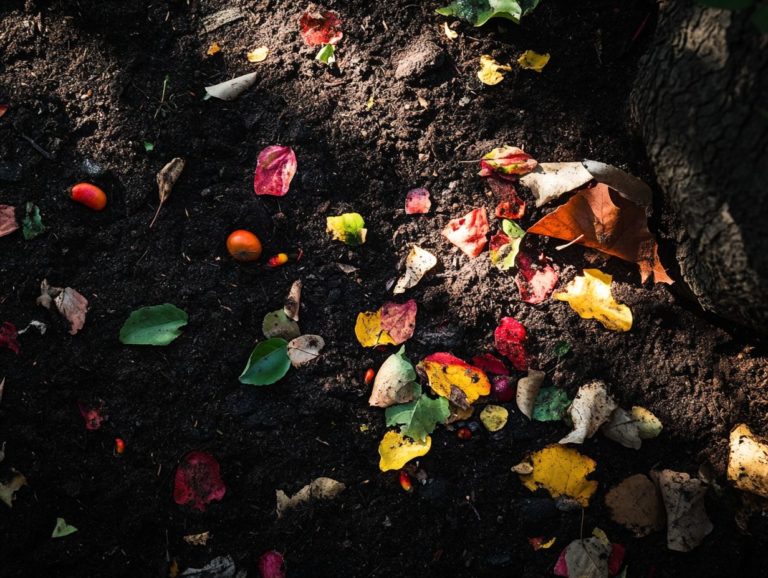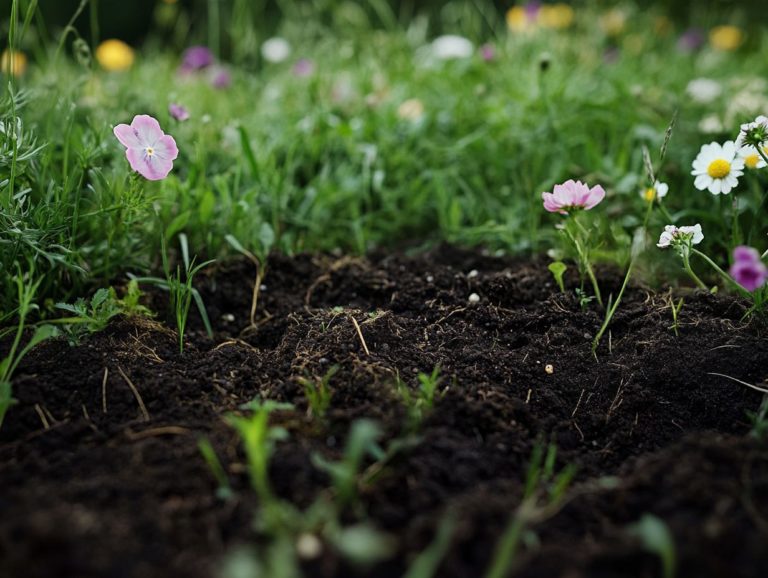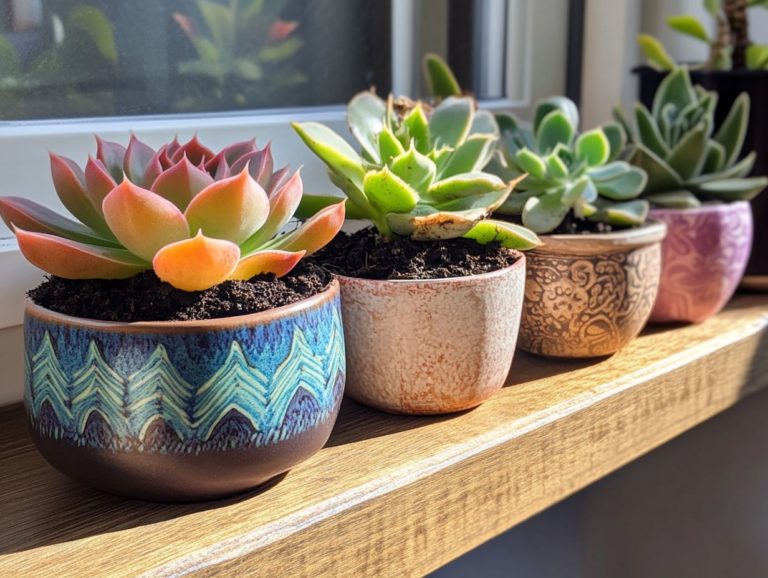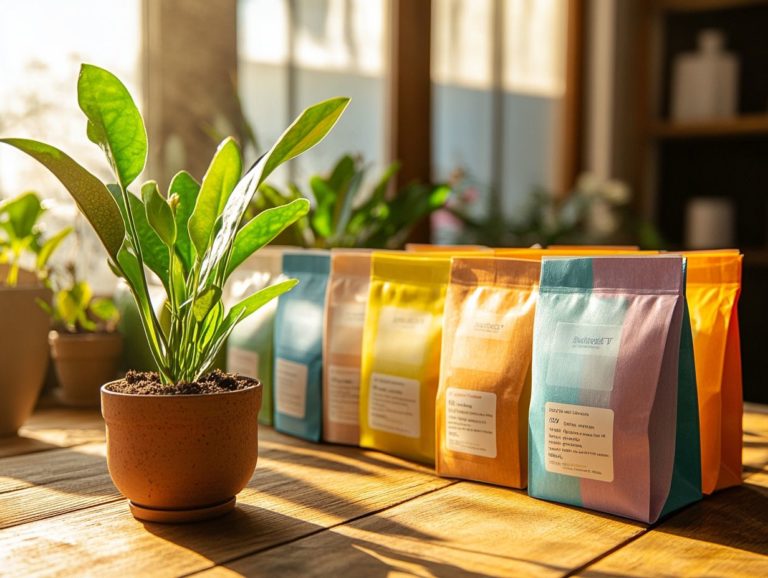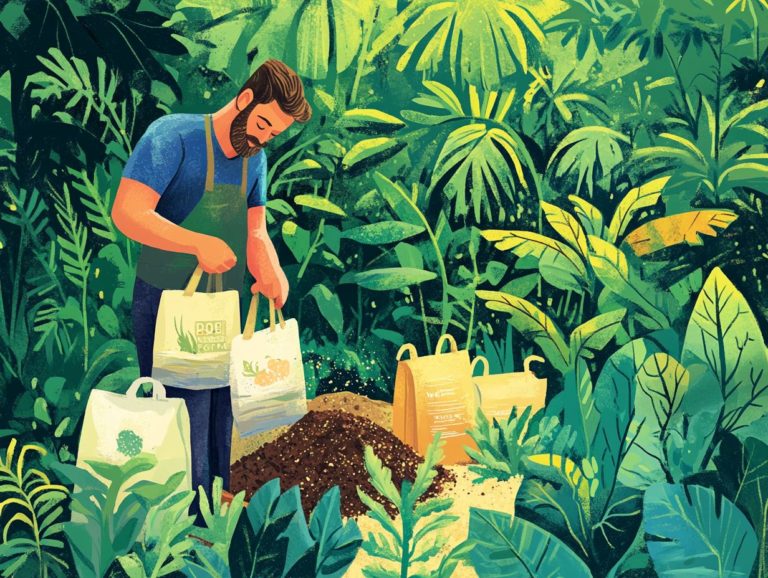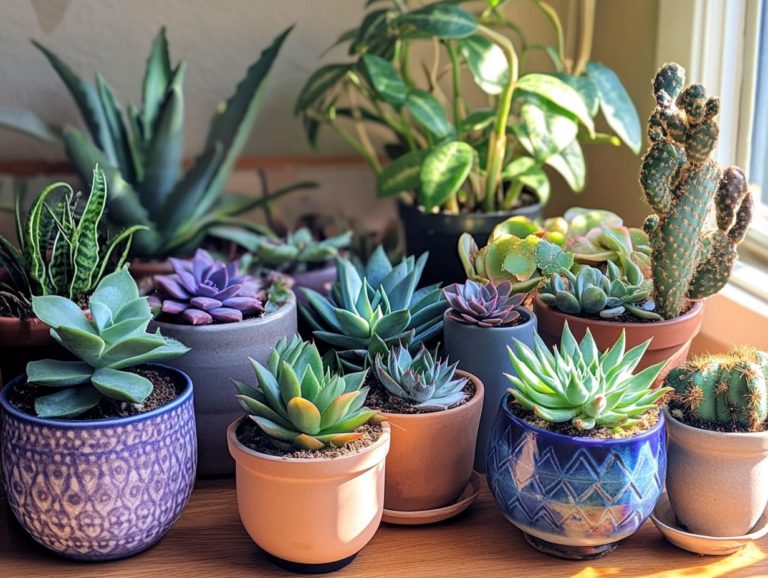10 Best Practices for Soil Preparation
Preparing your soil is an essential step for gardening success. Whether you re starting a vegetable garden, establishing a flower bed, or landscaping your yard, the quality of your soil profoundly influences the health and growth of your plants. Incorporating organic matter like compost and manure is crucial for maintaining soil quality.
Here are ten best practices for soil preparation that will pave the way for your gardening triumph. From testing your soil to selecting the right tools, these insights will empower you to cultivate a thriving garden.
Embrace these essential steps and watch your plants flourish beautifully!
Contents
- Key Takeaways:
- 1. Test Your Soil Before Planting
- 2. Clear the Area of Any Debris or Weeds
- 3. Determine the Right Time for Preparation
- 4. Choose the Right Tools for the Job
- 5. Loosen the Soil with Aeration
- 6. Add Organic Matter for Nutrient-Rich Soil
- 7. Consider Adding Fertilizer
- 8. Level the Soil for Optimal Drainage
- 9. Mulch to Retain Moisture and Control Weeds
- 10. Avoid Overworking the Soil
- When Is the Best Time to Prepare Soil for Planting?
- What Are the Benefits of Preparing Soil Before Planting?
- What Are the Different Types of Soil and How Do They Affect Plant Growth?
- How Can Soil Preparation Differ for Different Types of Plants?
- What Are the Common Mistakes to Avoid When Preparing Soil?
- How Can Proper Soil Preparation Lead to a Successful Harvest?
- Frequently Asked Questions
- What are the 10 Best Practices for Soil Preparation?
- Why is it important to choose the right location for soil preparation?
- How do I test my soil before preparing it?
- Why is it necessary to remove debris before preparing the soil?
- What are some benefits of adding organic matter to the soil?
- How do I create proper drainage for my soil using farming methods?
- Why is mulching important in soil preparation?
Key Takeaways:
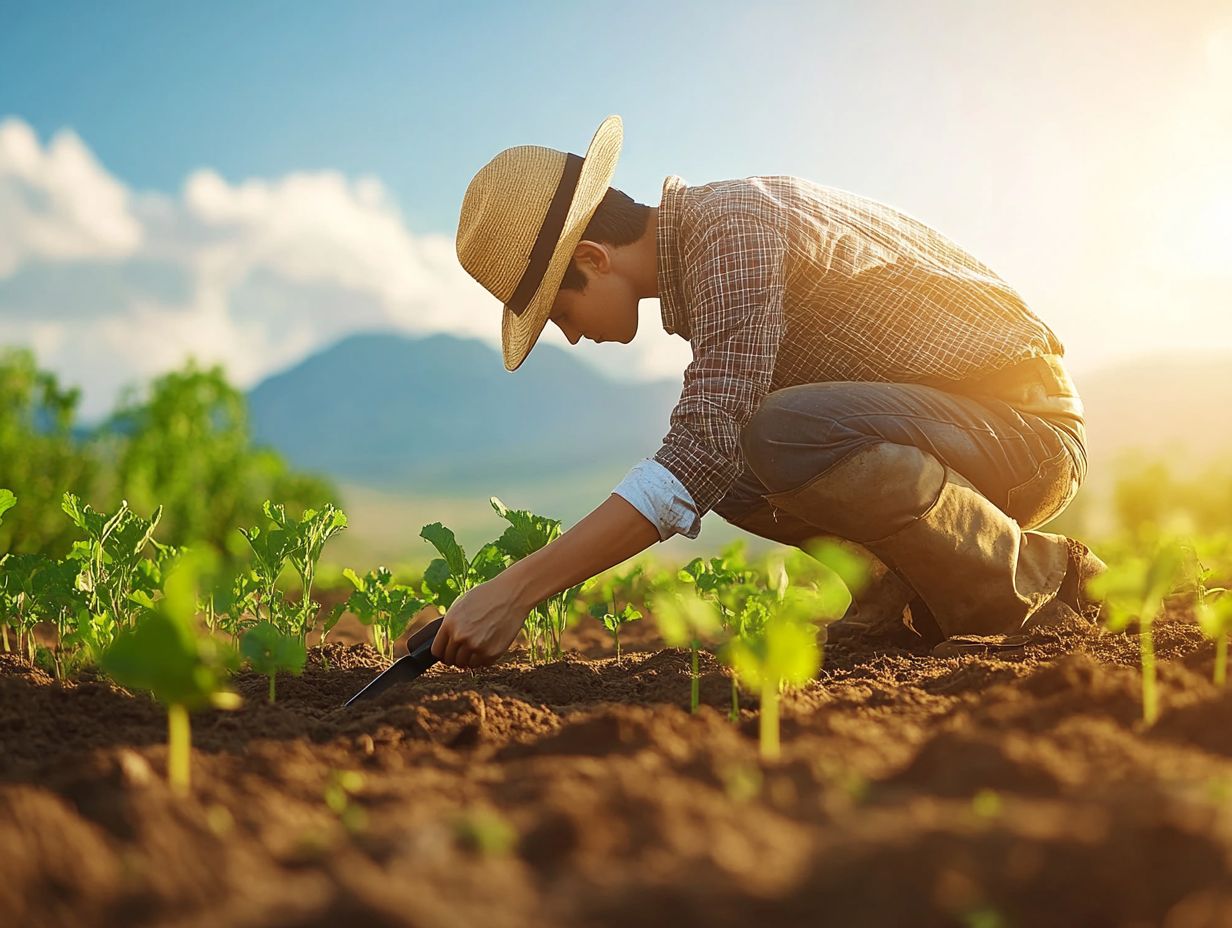
- Test your soil before planting to determine its nutrient content and pH levels. This will provide valuable insights into necessary improvements.
- Clear the area of debris and weeds to give your plants the best chance of growth.
- Choose the right time and tools for soil preparation to ensure a successful harvest.
1. Test Your Soil Before Planting
Testing your soil is crucial for gardening success. A thorough soil test reveals the improvements needed for optimal soil quality, guiding you in selecting the right organic fertilizers to boost microbial activity and nutrient absorption.
It gives you a comprehensive understanding of its composition, including pH levels, soil nutrients, and organic matter content. All these factors impact plant health and growth potential.
Familiarize yourself with different methods for testing soil pH and nutrient content. Home kits offer a convenient option for basic assessments, while professional labs provide detailed analyses that often include phosphorus, potassium, and other crucial micronutrients.
Every soil type be it clay, loamy, or sandy has unique characteristics that influence how water and nutrients are retained or drained. For instance, clay soils may hold moisture well but might require amendments to enhance aeration. Conversely, sandy soils drain quickly, necessitating more frequent fertilization.
By understanding your soil type, you can tailor your gardening approach, ensuring that any improvements are effective and suited specifically to your growing conditions.
2. Clear the Area of Any Debris or Weeds
Clearing your garden bed of debris and weeds is essential for optimal organic gardening. This prevents competition for nutrients and moisture among plant roots while setting the stage for healthy growth.
By removing unwanted plants, you’ll enhance soil aeration and promote better drainage. Manual removal is particularly effective, allowing you to target specific problem areas while keeping beneficial microorganisms in the soil undisturbed.
Creating compost piles from the cleared organic material enables you to recycle nutrients back into your garden ecosystem. This practice enriches the soil structure and boosts overall plant health.
A clean garden area minimizes the risk of pests and diseases, making it a crucial task for any dedicated gardener.
3. Determine the Right Time for Preparation
Determining the right time for soil preparation is crucial for your success in organic gardening. It aligns with seasonal changes and climatic conditions that affect soil moisture and nutrients.
Understanding the best times to plant is essential for achieving consistent yields and nurturing healthy plants. For instance, knowing when to plant cool-season crops compared to warm-season varieties is crucial for success. Cool-season crops thrive when you prepare the soil in early spring, just as temperatures start to rise, while warm-season varieties flourish when the soil warms up later in the season.
Factors such as your regional climate, local weather patterns, and even unique microclimates small areas with different weather conditions can significantly influence your timing. You can rely on indicators like soil temperature and moisture levels, which are easily assessed with simple tools or just your keen observation skills, to determine when conditions are ideal for planting.
By paying close attention to these seasonal cues, you can dramatically enhance the success of your gardening efforts.
4. Choose the Right Tools for the Job
Choosing the right tools for soil preparation can significantly elevate the efficiency of your gardening efforts, especially when you re contending with various soil types like clay, loamy, or sandy soil. Each type demands specific techniques for tilling or double digging.
Equipping yourself with essential gardening tools such as shovels, tillers, and an array of hoes opens up a world of possibilities for effective soil aeration and the creation of thriving raised beds. A dependable shovel can transform your gardening tasks into a breeze! Meanwhile, a tiller can save you precious time and energy, particularly in larger plots.
Pick tools that match your gardening style and needs for the best results. A lightweight hoe might be just what you need for those raised beds, while a sturdier model could tackle the challenges posed by more robust soil types. Investing in well-crafted tools not only ensures durability and performance but also enriches every gardening experience.
5. Loosen the Soil with Aeration
Loosening your soil is a game-changer for plant growth! Aeration is essential for fostering root growth and enhancing moisture retention, particularly in compacted soil that can impede plant health and nutrient absorption.
By employing various techniques such as garden forks or specialized aerators, you can effectively break up dense layers of soil, enabling air, water, and nutrients to penetrate more deeply. This process cultivates a healthier environment for plant roots to flourish and stimulates microbial activity, which helps decompose organic matter and boost soil fertility.
When microbes thrive in well-aerated soil, they boost soil structure, promoting better drainage and minimizing the risk of root rot. Aeration nurtures a thriving ecosystem that supports vibrant plant growth and resilience, essential for maintaining a healthy garden environment.
6. Add Organic Matter for Nutrient-Rich Soil
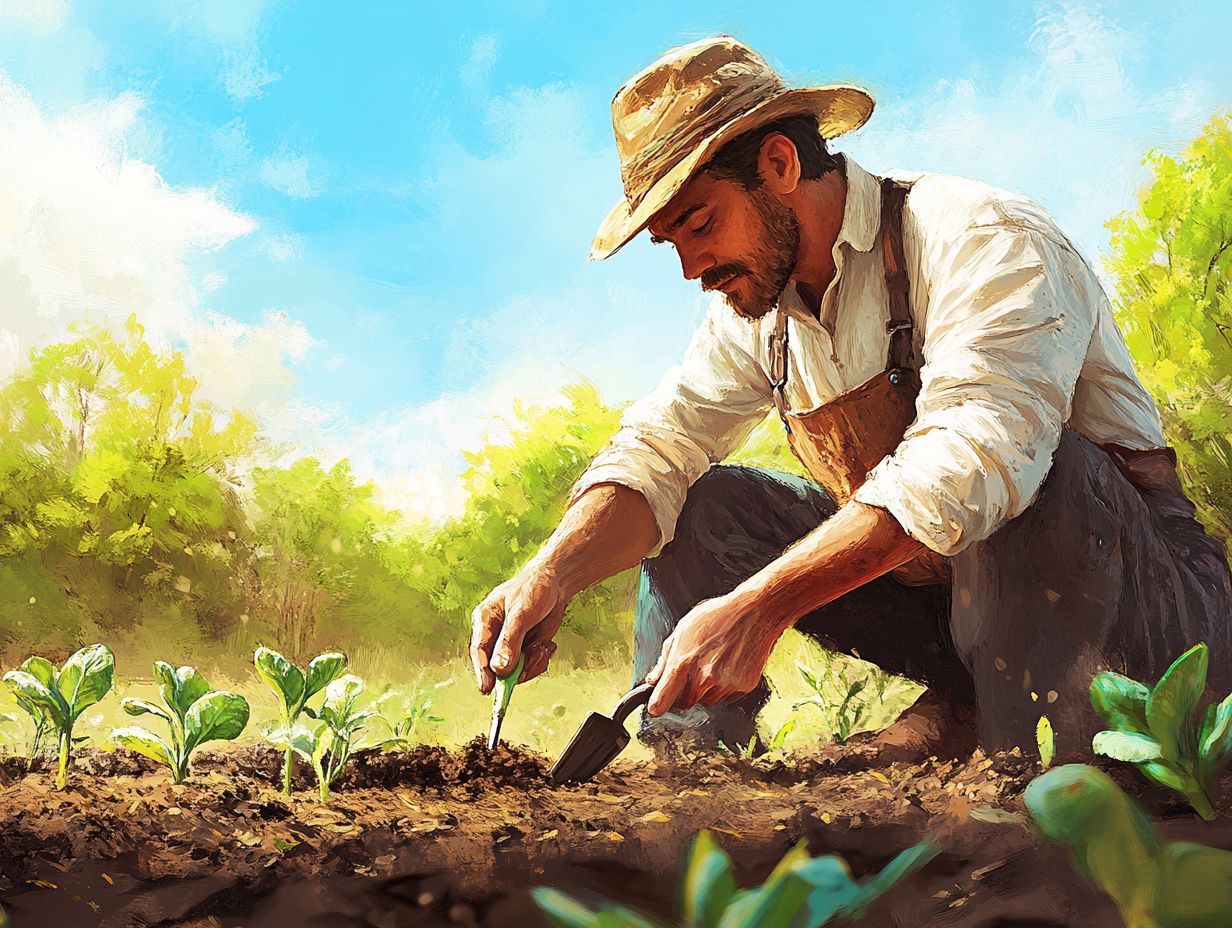
Incorporating organic matter such as compost and manure into your soil preparation can dramatically enhance the quality of your soil, enriching its nutrient content and nurturing a vibrant ecosystem filled with earthworms and beneficial microbes.
Creating a compost pile is both straightforward and rewarding. Start by layering brown materials, like dried leaves and cardboard, with green materials, such as vegetable scraps and fresh grass clippings. This layered technique promotes aeration and speeds up decomposition, resulting in nutrient-rich compost.
Selecting the right organic materials is vital; items like straw, coffee grounds, and small amounts of garden waste can effectively enrich your pile. Over time, these organic amendments will improve soil structure, enhance water retention, and elevate the overall health of your plants, leading to flourishing gardens and bountiful harvests.
7. Consider Adding Fertilizer
Adding organic fertilizers is essential for soil preparation. It impacts soil nutrients and optimizes absorption for healthier plants.
Various types of organic fertilizers like compost, manure, and bone meal each serve distinct purposes in enhancing soil quality and nourishing your plants. By improving soil structure and water retention, these fertilizers promote beneficial microbial activity, which is crucial for robust plant growth.
Understanding soil chemistry is vital in determining which fertilizers will be most effective for your garden. Being aware of pH levels, nutrients in the soil, and organic matter composition can help you make informed decisions about your applications. Regular soil testing gives you the power to assess nutrient levels, ensuring you provide the right balance of elements to meet your plants needs, thus fostering strong and vibrant growth throughout the season.
8. Level the Soil for Optimal Drainage
Leveling the soil is absolutely essential for achieving optimal drainage, which is key to preventing waterlogging and nurturing healthy root growth in your vegetable garden.
Creating a smooth, even surface not only enhances water runoff but also streamlines your planting process. Techniques such as using a garden rake or a board can help you spread the soil evenly, ensuring there are no low spots to trap water.
By leveling the soil, you gain better control over moisture levels and improve the overall soil composition, leading to vibrant plants. This straightforward yet impactful practice ultimately fosters a thriving garden ecosystem, where every plant can access the nutrients and water it needs for robust growth.
9. Mulch to Retain Moisture and Control Weeds
Utilizing materials like grass clippings and straw can significantly enhance moisture retention while suppressing weed growth, ultimately supporting your gardening efforts.
Applying mulch in your garden is a superb practice for retaining moisture, controlling weeds, and enhancing soil biology, all of which create an ideal environment for your plant roots.
In terms of the various types of mulch, straw, leaves, and cardboard each offer unique advantages. Straw is lightweight and excels at moisture retention, breaking down slowly to enrich the soil over time. Shredded leaves, which often abound in autumn, make for another excellent mulch choice, providing both essential nutrients and a protective barrier against weeds.
Cardboard is particularly effective at suppressing weeds and serves as a biodegradable option that enriches the soil as it decomposes. For the best results, it s crucial to apply mulch in a thick layer typically about 2 to 4 inches deep and to spread it evenly, ensuring that it doesn t come into direct contact with your plant stems to avoid rot.
10. Avoid Overworking the Soil
Avoiding the overworking of soil is essential for maintaining its structure and preventing compaction, both of which can adversely affect moisture retention and root growth.
When you excessively disturb the soil, you open the door to a myriad of issues, including reduced crop yields and limited nutrient availability. It’s crucial for gardeners and farmers to stay vigilant, recognizing signs like a hard, crusty surface or poor water infiltration that indicate the soil might be overworked.
To tackle these issues, employing proper tilling techniques is key. This means using the right tools and only tilling when absolutely necessary, ensuring that the soil remains aerated and healthy.
Integrating cover crops and practicing crop rotation significantly boosts soil health, preserving its integrity and fostering a thriving ecosystem for plant growth.
Start implementing these practices today, and watch your garden flourish!
When Is the Best Time to Prepare Soil for Planting?
The best time to prepare your soil for planting depends on several factors, including climate, soil types (such as clay, sandy, and loamy), and the specific planting season for different vegetables. It’s essential to assess your local conditions and the needs of your plants.
For example, cool-season crops thrive when the soil temperature is between 40 F and 60 F. Warm-season varieties prefer their soil to reach at least 65 F. Understanding regional weather patterns is crucial. By monitoring temperature forecasts and seasonal changes, you can determine when to till or improve your soil.
Keeping a simple weather journal can be a game changer. It helps you track temperatures and precipitation, giving you valuable insights into the best planting times. Remember, moisture levels are vital for soil health, ensuring your plants have the perfect environment to thrive.
What Are the Benefits of Preparing Soil Before Planting?
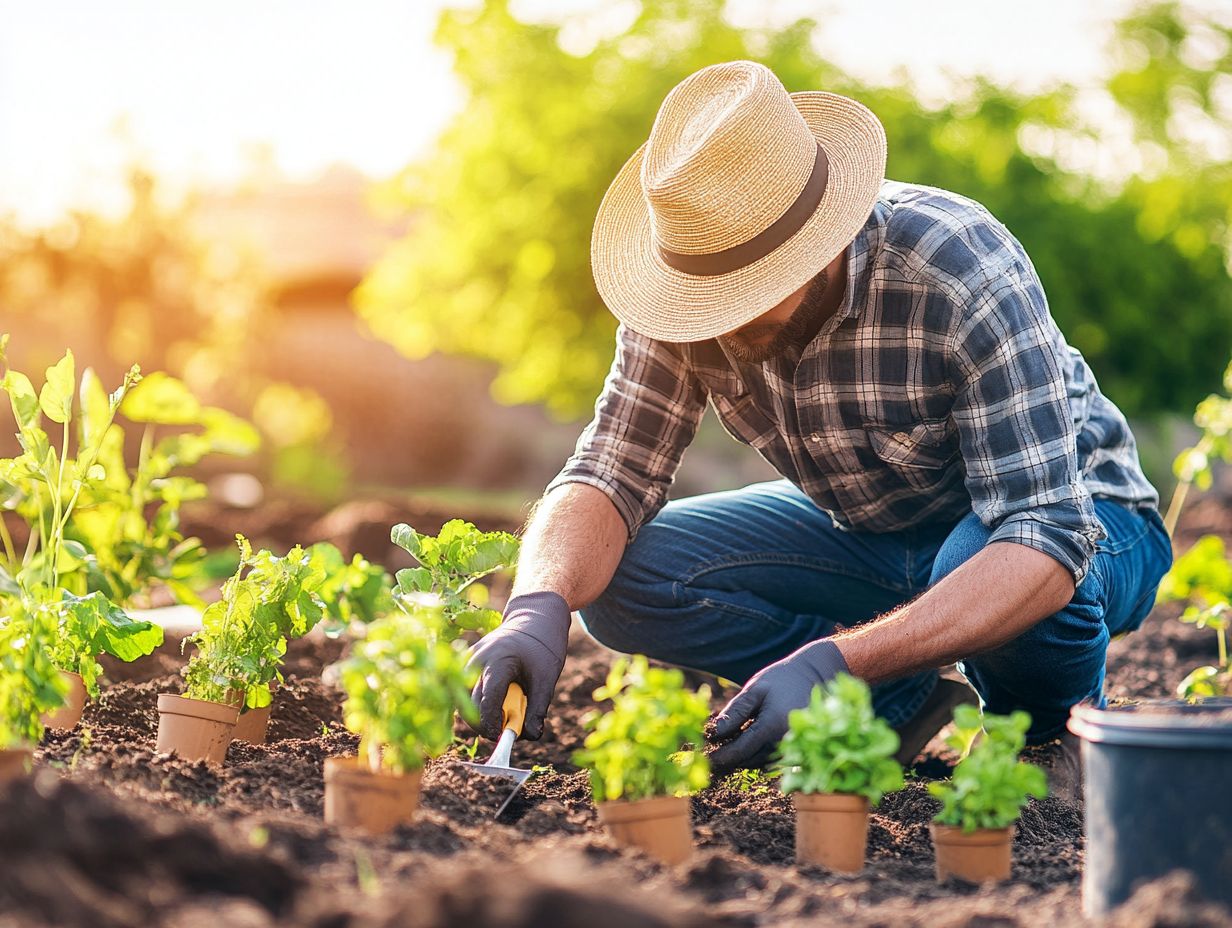
Preparing your soil before planting is a game changer, offering benefits like improved soil quality, enhanced plant health, and increased nutrient absorption. These factors are crucial for a thriving organic garden.
When you invest time in preparing your soil, you set the stage for stronger roots and healthier plants. This essential step enhances moisture retention, providing a steady water supply. It also aids in weed control by creating a rich environment that discourages unwanted growth.
Well-prepared soil promotes beneficial microbial activity, breaking down organic materials and releasing essential nutrients. These elements work together to encourage robust plant development, leading to higher yields and a more bountiful organic garden.
What Are the Different Types of Soil and How Do They Affect Plant Growth?
Understanding soil types clay, sandy, and loamy is crucial for gardening success. Each type has unique characteristics that significantly influence plant growth and nutrient availability.
Clay soil holds onto water and nutrients but can compact, making it challenging for roots to push through. Sandy soil drains quickly but struggles to retain nutrients, which isn’t ideal for many plants.
Loamy soil strikes the perfect balance, combining the best traits of clay and sand. It offers excellent drainage while retaining nutrients, fostering robust root systems. Improving clay with organic matter enhances its structure and aeration. Enriching sandy soil with compost boosts its nutrient absorption.
By understanding these soil properties, you can create the optimal growing environment for your plants, leading to a flourishing garden.
How Can Soil Preparation Differ for Different Types of Plants?
Soil preparation varies based on the types of plants you’re cultivating. Each species has specific requirements for soil nutrients, texture, and structure, influencing root growth and overall health.
Your vegetables thrive in loamy soil rich in organic matter, which provides excellent drainage and necessary moisture. Herbs might prefer well-drained sandy soil, preventing waterlogging and allowing their roots to breathe.
For flowers, the variety you choose determines a soil mix that balances nutrient-rich compost with a lighter, more friable texture, encouraging vibrant blooms.
By understanding these specific needs, you can tailor your soil amendments, incorporating elements like compost, peat moss, or perlite, to create ideal growing conditions for each type of plant.
What Are the Common Mistakes to Avoid When Preparing Soil?
Common mistakes during soil preparation, like overworking the soil and skipping nutrient tests, can seriously undermine your gardening success. These oversights lead to poor plant health and reduced yields.
Such errors disrupt the soil’s structure and fertility. They can also create an unwelcoming environment for beneficial microorganisms that are essential for a thriving garden. To achieve the best results, conduct thorough soil tests before planting. This provides valuable insights into nutrient levels and pH balance.
Incorporating organic amendments like compost or well-rotted manure significantly improves the soil’s structure and nutrient profile. Embracing minimal tillage practices helps maintain soil integrity, reduces compaction and erosion, and fosters a healthy ecosystem that supports vigorous plant growth.
How Can Proper Soil Preparation Lead to a Successful Harvest?
Proper soil preparation is a fundamental component for achieving a successful harvest. It ensures optimal plant health, nutrient uptake, and robust root growth throughout the growing season. This preparation sets the stage for your plants to thrive and access essential nutrients more efficiently.
Experienced gardeners advocate for practices such as testing soil pH and organic content to tailor amendments accordingly. A balanced mix of compost and mulch retains moisture and enhances microbial activity, benefiting crops like tomatoes and peppers. For optimal results, refer to the best practices for soil testing, as employing crop rotation improves soil structure while preventing nutrient depletion.
All these practices show how meticulous soil management directly impacts the vitality and yield of your harvest.
Frequently Asked Questions
What are the 10 Best Practices for Soil Preparation?
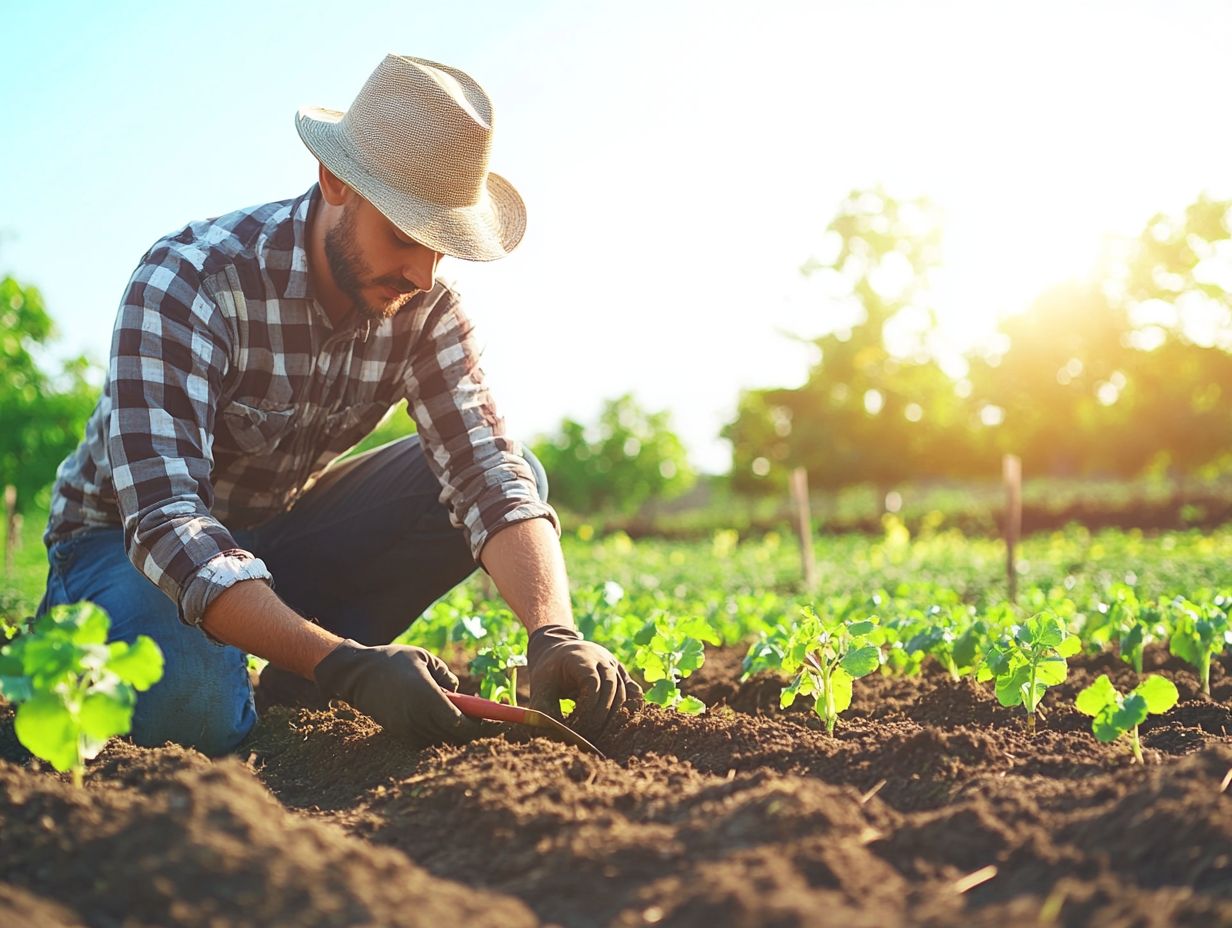
- Choosing the right location
- Testing the soil
- Removing any debris
- Tilling the soil
- Adding organic matter
- Adjusting the pH levels
- Creating proper drainage
- Controlling weeds
- Mulching
- Keeping the soil moist
Why is it important to choose the right location for soil preparation?
Choosing the right location for soil preparation is crucial for the success of your plants. Factors like sunlight exposure, slope, and nearby structures can all impact soil and plant health.
How do I test my soil before preparing it?
You can test your soil using a soil testing kit or by sending a sample to a laboratory. These tests indicate the pH level, nutrient levels, and texture of your soil, helping you determine the best preparation course.
Why is it necessary to remove debris before preparing the soil?
Removing debris like rocks, sticks, and roots is essential. Debris can hinder plant growth and make it difficult for roots to establish themselves. It also allows for better aeration and nutrient absorption.
What are some benefits of adding organic matter to the soil?
Adding organic matter, such as compost or manure, improves overall soil health by providing essential nutrients, enhancing soil structure, and promoting beneficial microorganisms. It also retains moisture and suppresses weed growth.
How do I create proper drainage for my soil using farming methods?
Proper drainage is vital for healthy soil and plants. You can achieve this by incorporating organic matter or sand, creating raised beds, or adding drainage pipes. Ensure that water flows freely through the soil for thriving plants!
Why is mulching important in soil preparation?
Mulching helps retain moisture, regulate temperature, and suppress weeds. As it breaks down, it adds organic matter to the soil, providing essential nutrients for plant growth.
Ready to enhance your garden? Start preparing your soil today for the best results!

